The man behind the legend: McGee’s story goes well beyond SB hangover

As part of our countdown to Super Bowl 50, SI.com is rolling out a series focusing on the overlooked, forgotten or just plain strange history of football's biggest game. From commercials to Super Bowl parties, we'll cover it all, with new stories published every week here.
This story is decidedly not untold. Not the crux of it, anyway. It is, in fact, one of the most told stories in the half-century history of the Super Bowl—spun and re-spun, embellished and then embellished some more, until one day even the man at its center jokingly confided to his wife that he could no longer remember which parts were real and which parts had been added over the years. It is the story of how, on the eve of the first Super Bowl, in January of 1967, 34-year-old Packers wide receiver Max McGee, an 11-year veteran who had caught only four passes in the regular season and was fast bearing down on retirement, decided to break curfew and spend the night with two flight attendants that he had met in the team’s hotel bar (in the language of the time they are "stewardesses," a measure of the cultural distance between then and now). After all, he wasn’t planning to get off the bench in the game the next afternoon against the AFL champion Kansas City Chiefs.
It is the story of how McGee shuffled back into the hotel at 6:30 in the morning on game day, passed early-rising quarterback Bart Starr in the lobby, and went up to his room to snag a little sleep. And how Packers starting wideout Boyd Dowler re-injured his dodgy right shoulder on the third snap of the game and McGee was summoned to action by legendary coach Vince Lombardi. And how, improbably, McGee scored the first touchdown in Super Bowl history on a 37-yard pass from Starr and went on to catch six more passes for a total of 138 yards (just barely missing the list of the top-10 receiving performances in the history of the big game, even after 49 years and the transformation of football from land to air) and another touchdown in the Packers’ 35–10 victory. How he probably should have the won the Corvette given to the game’s Most Valuable Player, which instead went to Starr.
It is a story that irresistibly finds its way into the snickering, puerile hearts of male football fans of all ages, the tale of a Packer playboy who not only ignored The Man (and no coach has ever been more The Man than Lombardi), but got the girl(s!) and then dominated the Super Bowl with a hangover, winning a chest full of macho merit badges in a single night (and in the day that followed). As long as there are Super Bowls, there will be Max McGee, the guy with an alliterative name straight from a cheap crime novel who stayed out in the darkness of a winter night in California and groggily emerged a hero in the sunlight of the biggest football game in America.
The best part is that it’s all true. But it’s not all there is. There is a man behind the story, and a story behind the man. That story is untold. That story is about a man who once lived every bit of the legend; and then for a long time after that, stopped living it altogether. That story is about a gifted athlete who was always better on third down than on first and who loved life much more than he loved football. A man who didn’t care at all for business, but who turned every business he touched to gold. Who married once young, and badly; then once old, and exceptionally well. Who struck a deal with the tale of that night and day in Los Angeles and agreed to embrace it, yet never let it define him. Who left not a moment’s happiness on the table when his life was done.
Tomah, Wisconsin
June 2002
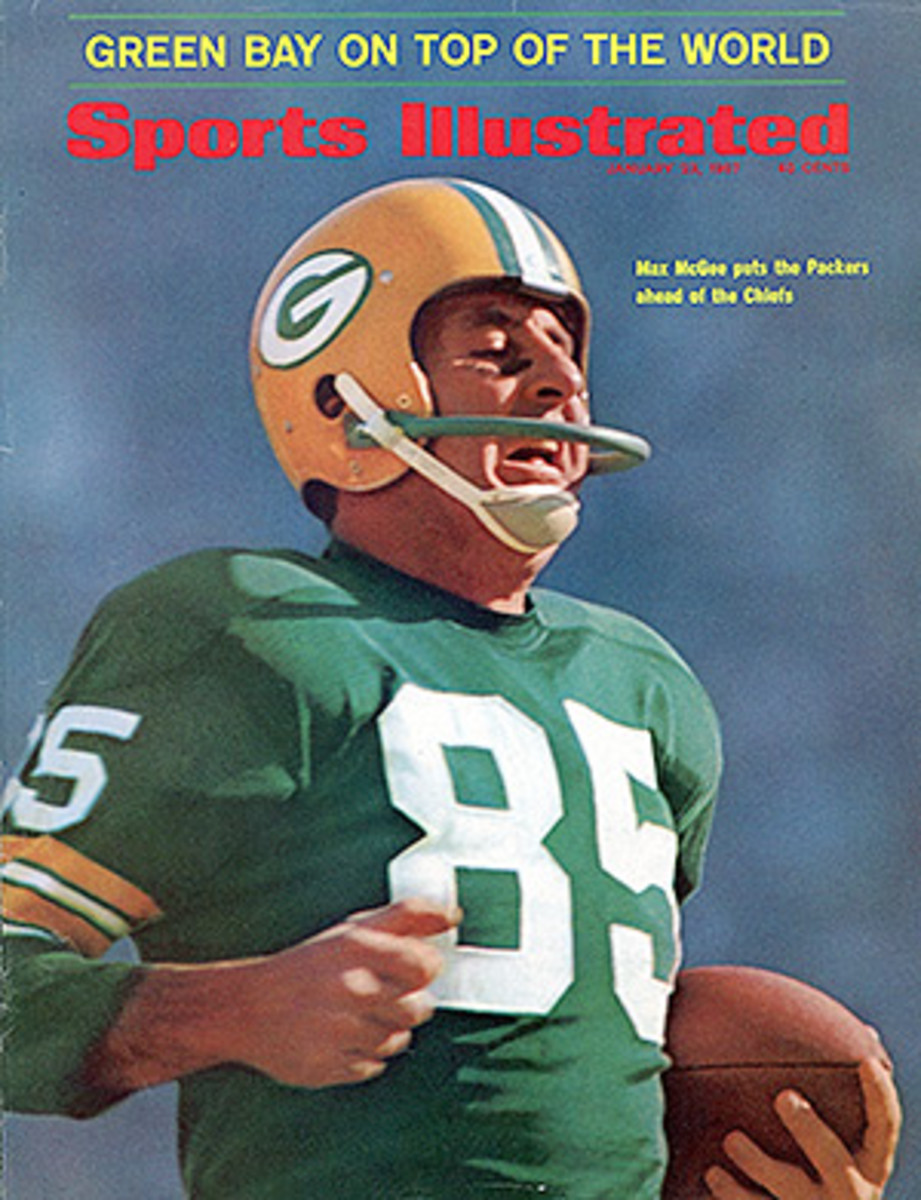
A line stretches along the shore of Lake Tomah, where Packers fans of a certain age (and some other ages, too) are waiting to get autographs from Paul Hornung and McGee, featured guests at the city’s late spring festival. The two ex-players are sitting side-by-side in a picnic area, each with a stack of photos in front of him. Hornung signs a classic image from 1960, in which he is running onto the field before a game, sunshine lighting his blond curls, eye black under a young man’s blue eyes and a pale yellow Packers helmet in his right hand. McGee signs a copy of the picture that appeared on the cover of SI after that first Super Bowl, a tight shot of his face and torso as he crossed the goal line on the first touchdown, his features vaguely contorted in an expression of fatigue, a single-bar facemask slicing across his chin. It is without question his greatest moment as an athlete.
To the fans in line, Hornung and McGee are frozen in a time long passed, two of Lombardi’s men. They approach Hornung cautiously; he was the celebrity then and remains one here, ever so distant. Not so with McGee. He is affable and welcoming at age 70. The fans can’t tell that he is in the early stages of Alzheimer’s Disease because McGee is so practiced in his role. One after another they ask McGee about that afternoon in Los Angeles (and wordlessly, about the night before). Time and again, McGee gives them the response they seek, cocking his head to the side and squinting upward like a fraternity brother trying to piece together the remnants of a lost Saturday night. "I sort of remember that day," says McGee to one man and everyone nearby has a good laugh at that. It is the line they came to hear.
William Max McGee was born in 1932 and raised in the small northeast Texas town of White Oak, which sits on U.S. Highway 80, about 125 miles east of Dallas. White Oak currently has a population of 6,469, but was probably much smaller back in the '30s and '40s; the Texas Historical Association writes that, "after World War II, the population [of White Oak] continued to increase … and in 1962 the population was reported to be 1,250." McGee was the youngest of six children—five boys and one girl born to Robert Lee and Beatrice Parks McGee. White Oak is smack in the middle of the East Texas oilfield that first boomed in the 1930s, but the McGees were not enriched by its presence. Robert supported the family, first by working in a shop in town and later as a school bus driver. Beatrice McGee and at least three of her children were diabetic, and Max would carry the image of his mother injecting herself with daily insulin shots into his adult life.
All the McGee boys were athletes, and most notably outstanding football players at White Oak High School. Coy McGee, six years older than Max, played four years at Notre Dame and was a reserve halfback on coach Frank Leahy’s teams from 1946-48, including the '46 team that is regarded as one of the best teams in college football history. Coy McGee came off the bench and rushed for 146 yards and two touchdowns in the last game of that season, a 26-6 win over USC that clinched the national championship for the Fighting Irish.
Max was every bit as good as his brothers. As a senior at White Oak High in the fall of 1949, he rushed for 3,048 yards and, according to records compiled by the National Federation of High Schools, became the first high school player to rush for more than 3,000 yards in a season. (That mark has been reached only 87 times.) He received a football scholarship to Tulane, in New Orleans, where he played running back, returned kicks and was also the punter. He was the team’s leading rusher for three consecutive seasons and also caught 34 passes.
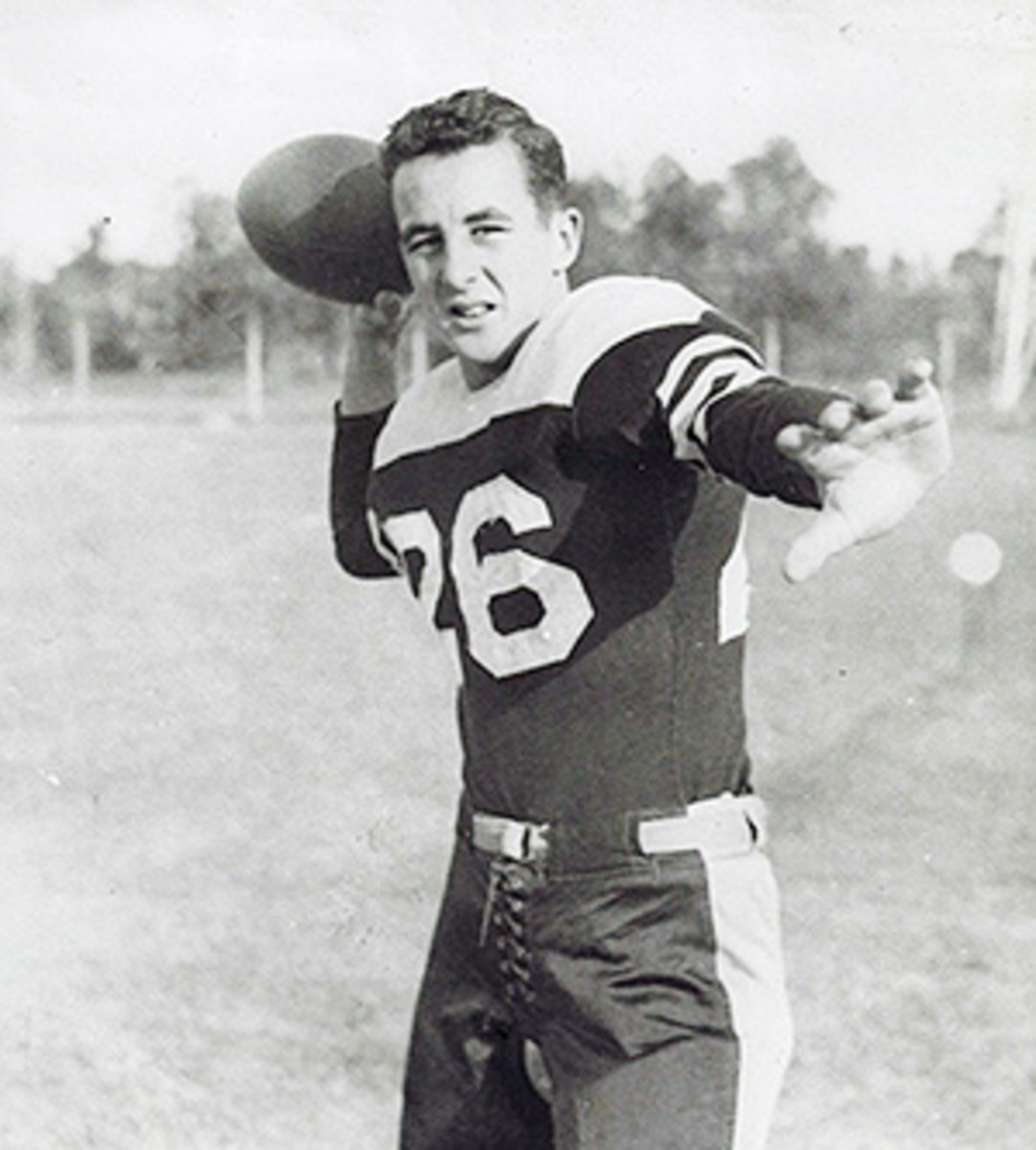
While at Tulane, Max met Marcia Priebe, a young woman from Rochester, Minn., who was a student at what was then called H. Sophie Newcomb Memorial College, the women’s sister school to Tulane. They were married in 1953 and had their first child, a daughter they named Marla, while still in New Orleans. McGee was selected by the Packers in the fifth round of the 1954 NFL draft and played one season with the team before enlisting in the U.S. Air Force. He was stationed at both Goodfellow Air Force Base in San Angelo, Texas, and Eglin Air Force Base in the Florida panhandle. In Florida, he participated in an early drone program, along with another NFL player, quarterback Zeke Bratkowski, who had just finished his rookie year with the Bears. "I would fly the plane, with the drone alongside," says Bratkwoski, now 84 and retired after a long career as an NFL coach and quarterback tutor. "And Max was down in the nose, piloting the drone."
McGee spent two years in the Air Force before returning to Green Bay in 1957. By then he and Marcia had a second daughter, named Mona, but their marriage was failing; they were divorced early in that year. Marcia went back to the Twin Cities to raise her daughters, Max remained in Green Bay to partake of a very different life. "What it came down to is they were clearly too young and they had different aspirations," says Mona Olson, 59, the younger of Max and Marcia’s two daughters. "My dad was taking off on his football career and my mother also wanted her own career."
McGee would spend the next 11 years in Green Bay, the first two on bad teams that won a total of four games and the next nine as an important cog in the Lombardi machine that won five NFL titles and the first two Super Bowls. In the six seasons from 1959-64, McGee, caught 238 passes for 31 touchdowns. At 6'3", 205 pounds, he had long-striding speed and sure hands. "He was one of the most talented natural athletes we had," says Hornung, 79 and living in his native Louisville.
"Max would make big plays," says Jerry Kramer, one of the famed pulling guards on Lombardi’s power sweep. "He might drop a no-account pass, but he would catch the big ones. Vince loved him for that."
Bratkowski, who was traded to the Packers and became Starr’s backup in 1964, says, "Max was smart, he was instinctive and he had tremendous confidence in his ability. One game in '65 against Baltimore, they showed a safety blitz. I was in there and I audibled to a quick out pattern to Max. Well, Max saw the cornerback standing outside and he broke it off to the post for a touchdown. He could read a blitz like a quarterback."
But if McGee was a valued asset on the field, he was even more cherished off it. His quick wit endeared him to teammates and helped lighten the tension under Lombardi’s oppressive rule. There’s story that’s often told—and could be apocryphal—in which a red-faced Lombardi screams at the team for its persistent breakdown in fundamentals and hoists a ball into the air. "We’re going to start at the beginning," he says. "This is a football." At which point McGee says, "Whoa, coach, could you slow down? You’re going too fast." (Kramer adds a twist to this story: "Vince had no idea where he was going after he said that about the football. Max got him off the hook with that line. And Max did that all the time. And it’s funny, because Max was actually a very shy, gentle man, but his sense of humor was the way he got past that.’’)
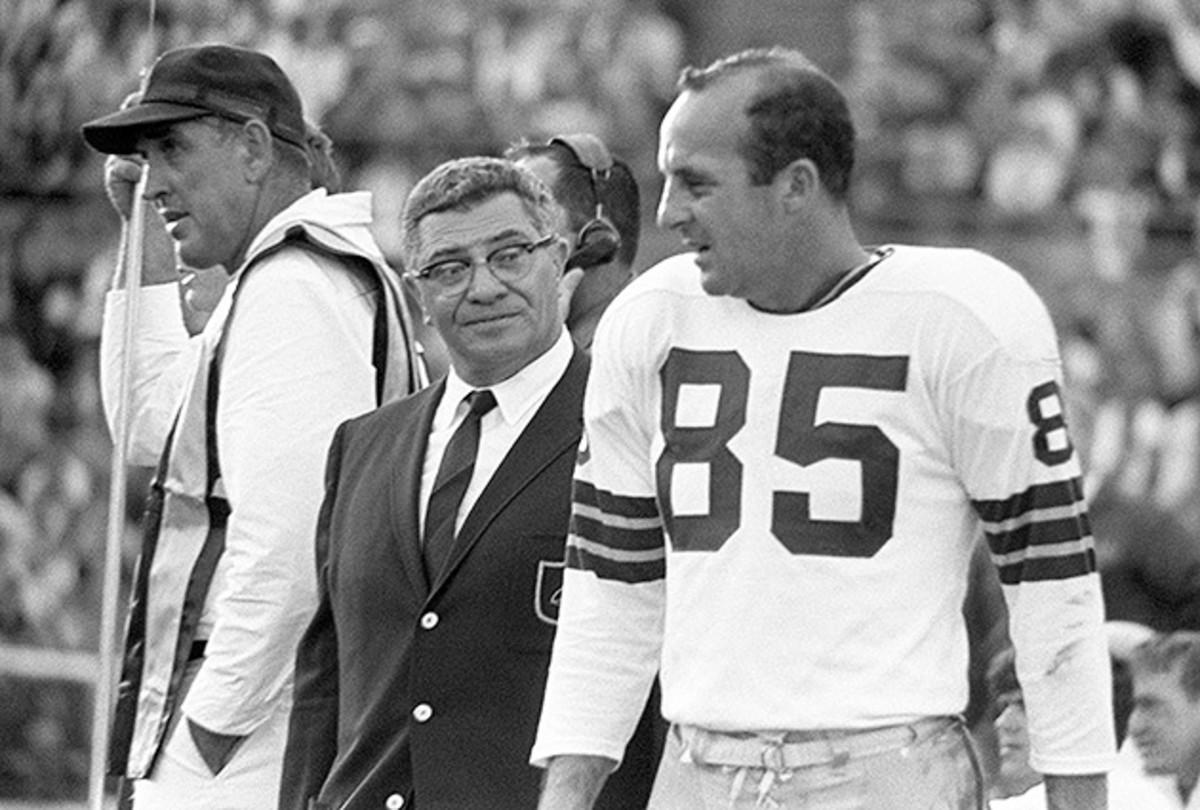
Throughout his career, McGee was also prone to concussions. During the brutal nutcracker drill, an explosive one-on-one tackling exercise, McGee was often present in and around the line, but few teammates recall his active participation. Years later he explained the reason to Kramer. "Early on I went to Lombardi," McGee said. "I told him, 'Coach, I know [vicious, old school linebacker Ray] Nitschke can kick my ass. You know Nitschke can kick my ass. And I’m pretty sure Nitschke knows he can kick my ass. I’ve got a paper head and I’d probably just get another concussion. What’s the sense in me getting in that drill and getting my ass kicked?"
Kramer finishes the story: "So coach says to Max, 'Well, if the guys don’t call you out, I won’t say anything.' And sometimes people did get called out, because the whole team would watch that drill. But Max just stayed in close proximity to the line, cool as a cucumber, and nobody ever called him out. He was a little older and a lot wiser than most of us."
That didn’t temper his nights. McGee lived with Hornung for much of his time in Green Bay. Many of the Packers were married; McGee and Hornung were single. Bratkowski moved in with them when he arrived in Green Bay in the fall of 1964. "I was a quarterback, with 8 a.m. meetings," he says. "There’s no way I could keep up with their lifestyle."
Hornung says, "Hell, Lombardi knew where we were every night. But he knew we would play ball on Sunday." Teammates knew McGee as not only the class clown, but also a cold-blooded competitor in anything from golf to poker. "A great student of human nature," says Kramer. Hornung once told his friend, professional golfer Raymond Floyd, that he would bet him $10,000 against McGee in a putting contest.
Four hours away, Marcia Priebe McGee re-married (in 1958) and became Marcia Gray. She raised Max’s two daughters and another child, as well. Max was a fleeting presence in their lives. Marcia brought the girls to see the Packers play the Vikings and on occasional trips to Green Bay. "We didn’t grow up with football as a part of our life," says Mona. "Max was an enigma to us, frankly. He was bigger than life, this other parent in my life who was there but not really engaged. There came a time when I understood that he was a wild man with Hornung, and they liked to party. I kind of thought he was funny and charming but not much beyond that."
When Marla and Mona were in their early teens, and Max was freshly retired, he brought the girls to his second home in Miami. "He wanted to be a dad, but he had no idea how to be a father to two teenaged girls," says Mona. "He took us to the Playboy Club, which was interesting. Neither of us was mad about it. He gave what he could give."
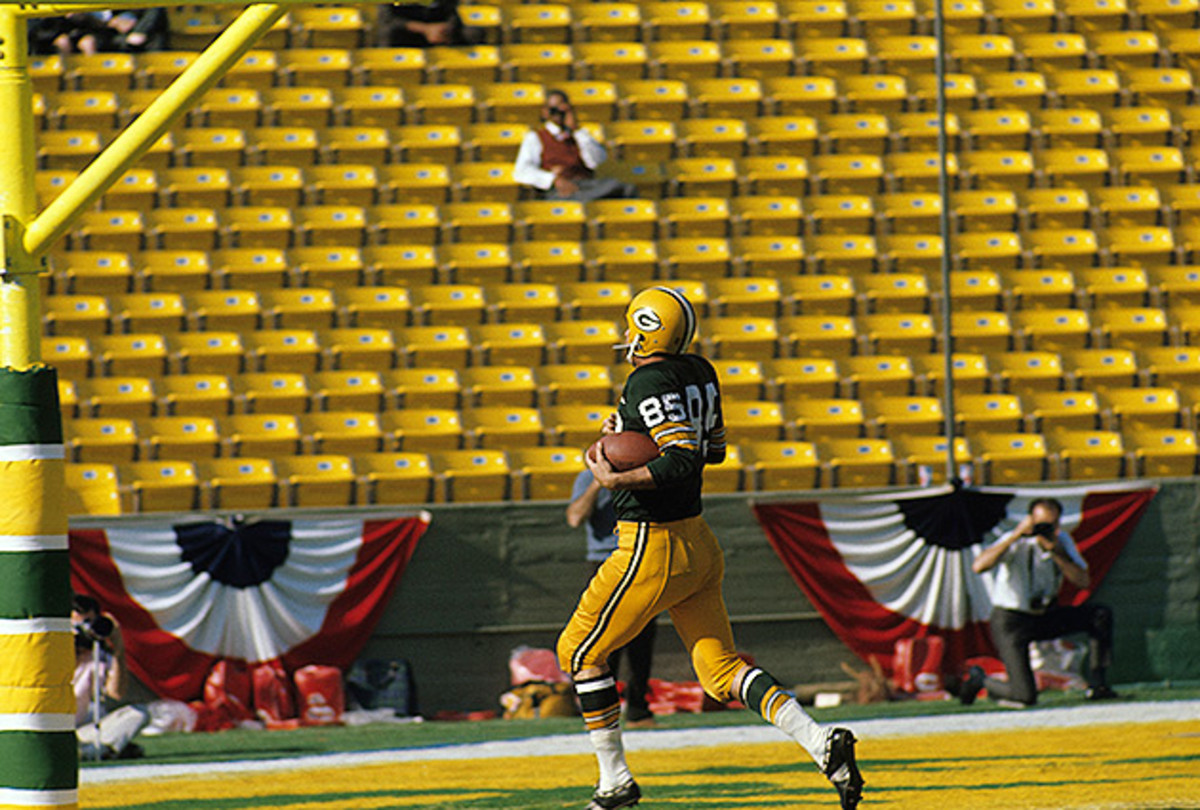
Super Bowl I
The first of the Super Bowls was almost an experiment: A game between the champions of the established NFL and the upstart AFL, which had stolen players with its draft and established its own television audience but had never been given the chance to play the older league in a meaningful game. It was played in bright, afternoon sunshine, with thousands of empty seats in the cavernous Los Angeles Coliseum, and broadcast on two national television networks simultaneously. Lombardi was obsessed with defending the honor of the NFL. In When Pride Still Mattered, his seminal biography of Lombardi, David Maraniss wrote: "No relaxation for his men, no distractions. He raised the fines for curfew violations to record amounts. 'Vince made it very clear from our first day out there that we had to win that game and that he didn’t want to make a squeaker out of it,' said Red Cochran, his offensive assistant. One loss and all was lost, [Lombardi] said."
Against this backdrop, Max McGee was seemingly in the final days of his career. In 1965 the Packers had acquired Carroll Dale in a trade with the Rams and paired him at flanker with veteran split end Boyd Dowler. McGee was relegated to backing up Dowler and occasionally getting reps at split end when Dowler moved to tight end. McGee caught only 10 passes in 1965 and just four in '66, leading to that first Super Bowl. (He did catch an important 28-yard touchdown pass from Starr in the '66 NFL title game, a tense, 34-27 win over Dallas in the Cotton Bowl.)
McGee came to California ready to party. He chafed at a week of locked-down training camp in Santa Barbara and when the team moved to Los Angeles on the eve of the big game, he made plans with those two flight attendants, assuming that Hornung, who was nursing an injured neck and wouldn’t play in the game, would join him. McGee snuck out after assistant coach Hawg Hanner’s 11 p.m. bed check and soon afterward, called Hornung. "He called and said 'I’ve got two girls and yours is gorgeous,' " says Hornung. " 'Come out and have a couple drinks with us.' " The fine was at least $5,000 and Hornung was getting married later that week and his neck was sore. He declined. The next time he heard from McGee was at 6:30 the next morning. "He called from the lobby and asked if they did a second check. I said 'No, you lucky bastard, now get your ass up here.' "
Before every game, Dowler, Dale and McGee would have a brief, ritual meeting to go over the game plan and review tendencies one last time. "We’re having our little meeting," says Dowler, 79 and living in Richmond, Va., "and Max says, 'Whatever you do, don’t go down today.' I said, What do you mean? Max says, 'I was out all night and I had a few more drinks than I should have and I didn’t get much sleep. So just don’t go down.' "
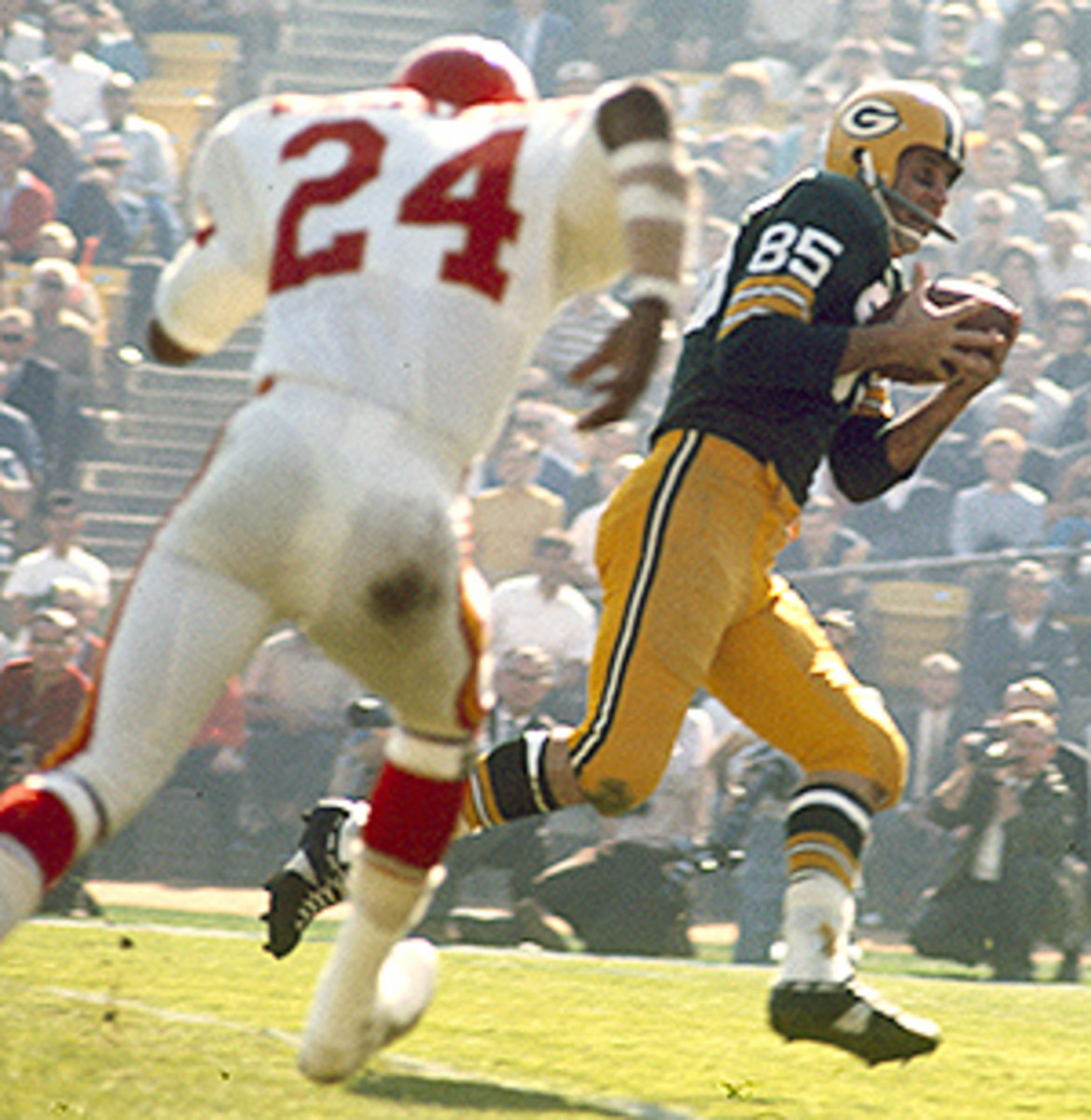
Dowler says, "Max had a strong constitution. I figured he could deal with it. But he did not expect to play." This was a potential problem. Dowler had played most of the 1965 season and all of the '66 season with a bad right shoulder; a calcium deposit had developed on the joint. Yet the Packers’ coaching staff had seen weaknesses in the Chiefs’ pass defense, including a propensity to leave the middle of the field open on blitzes. Starr was going to throw the ball extensively. "Plus, their defensive backs," says Dowler. "They had 'The Hammer' [future Hollywood actor Fred Williamson] on one side and some other guy, No. 22 [Willie Mitchell] on the other side. Neither one of them were very good, one-on-one. It wasn’t going to be like trying to beat Lem Barney or Night Train Lane [of the Detroit Lions]."
(McGee knew this, too. Maraniss, in When Pride Still Mattered, quotes McGee as telling Packers broadcaster Ray Scott, "I’ve been studying film and I’ve found me a cornerback. I’m gonna have him for breakfast, lunch and dinner." Still, if he had expected to play, he most likely would have stayed in the night before. Or possibly not.)
On the Packers’ first series, McGee took a seat next to Hornung on the bench and made small talk about the night before and Hornung’s upcoming wedding. On the field, Lombardi opened with three consecutive running plays. On the third, Dowler executed a crackback block on Chiefs’ free safety Johnny Robinson, who was dropping down in run support. "My shoulder was not in good shape at all coming into the game," says Dowler. "I usually put a foam pad underneath my shoulder pad, but since we were going to be throwing the ball a lot, I wanted to have some flexibility. I took the pad out. When I hit Johnny Robinson, I heard the calcium deposit crack and I knew immediately that I was finished."
McGee was summoned into the game, but couldn’t find his helmet. He put on a giant lineman’s helmet with a full cage and on his first snap missed connecting with Starr on a curl route. On the Packers’ next possession, Starr came out throwing: 11 yards to tight end Marv Fleming, 22 yards to running back Elijah Pitts, 12 yards to Dale. And then on third-and-three from the Kansas City 37, McGee ran a simple skinny post against Mitchell’s outside position and broke wide open. Robinson had blitzed, leaving acres of green in the middle of the secondary. Starr’s pass was far behind McGee, who reached back, controlled the ball and then turned straight upfield, into the end zone and history. It was a remarkable catch, by a man with a hangover and no sleep, running at full speed. McGee’s second touchdown, on another inside move against Mitchell, gave the Packers a 28–10 lead in the third quarter. That one came on a better throw by Starr, but McGee juggled it as he crossed beneath the goalposts, which were on the goalline. "The game of his life," says Hornung.
It’s likely that McGee had planned to retire, but instead he came back for one more season in 1967. Again, backing up Dowler and Dale, he caught a career-low three passes, but in Super Bowl II against the Oakland Raiders, he caught a 35-yard pass from Starr on a third-quarter, third-and-one, leading to the touchdown that gave the Packers a 23–7 lead, on the way to a 33–14 victory. There is no evidence that McGee was anywhere but asleep before that game, his last as a professional football player.
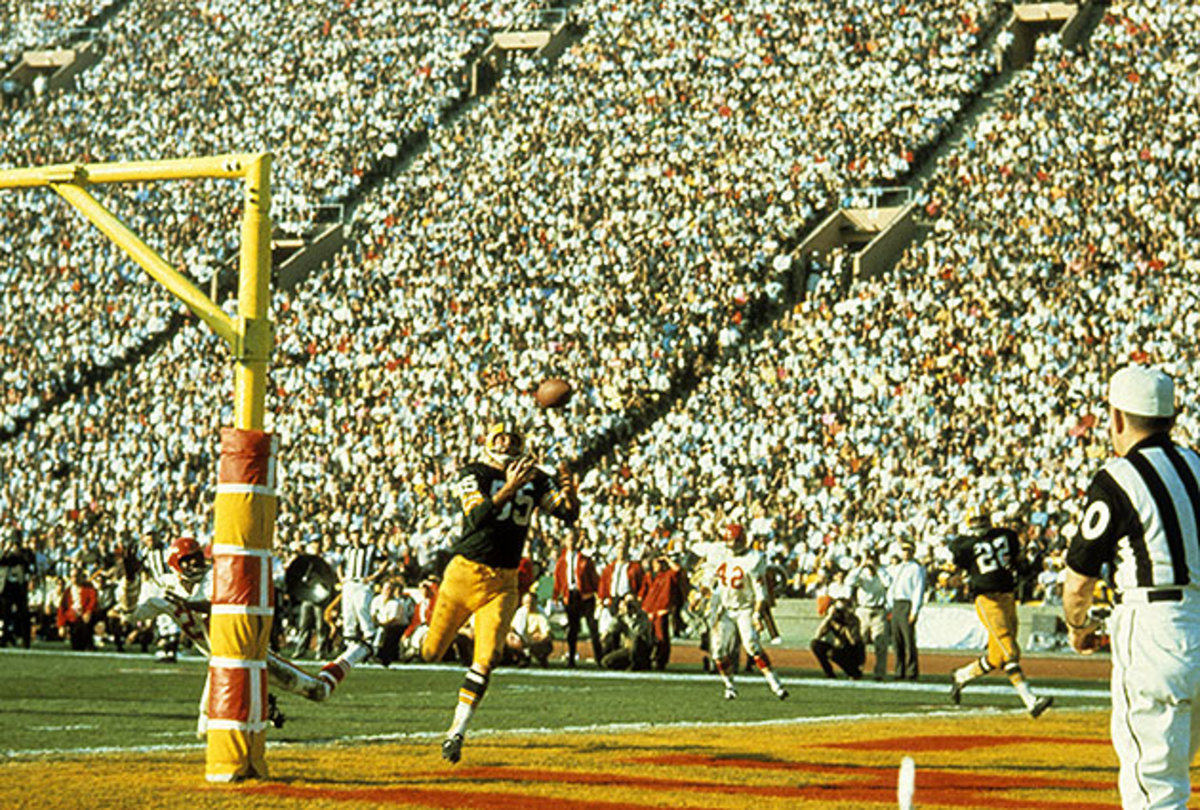
***
Not long after retirement, McGee and former Packers teammate Fuzzy Thurston partnered with businessman Bill Martine to open a group of successful Supper Clubs in Wisconsin called The Left Guard (and one called The Left End, after McGee), and later opened a Left Guard location in Minneapolis. When those three amicably dissolved their partnership, McGee was left with the Minneapolis location and moved to the Twin Cities.
That venture was just the beginning. In 1975, McGee and another businessman/restaurateur, Marno McDermott, opened the first location of a franchise that would become Chi-Chi’s (named after McDermott’s wife, who was named Ruthann, but had been nicknamed Chi-Chi in childhood), one of the earliest Mexican food-and-drink-themed full-service restaurant chains in the United States. Their first location was in a building that had previously been an A&P supermarket; McGee and McDermott put up $300,000 each to start the project. It was a roaring success. McDermott and McGee executed a backdoor IPO that made both men wealthy. “I remember the day we finished the backdoor deal,” says McDermott, now 77, retired, and living in San Diego. “Max and I were playing gin rummy at the country club and we were telling the other guys, you really should buy some of the stock. They were more interested in playing gin rummy. That was a mistake; we made a lot of people millionaires, including two or three of my secretaries.”
In a 1982 story headlined “The Enchilada Millionaires,” Time magazine wrote, “No other company has gained more from the rage for Mexican dining than Louisville-based Chi-Chi’s (fiscal 1982 sales: $35.8 million)…. The explosive run-up has made wealthy men of Chi-Chi’s founders, Marno McDermott and Max McGee. McGee, 50, a former star of the Green Bay Packers, now owns some 150,000 Chi-Chi’s shares, worth about $4 million, and is a director of the company.’’ McDermott says that from his and McGee’s initial investment of $600,000, the company reached a value of more than $1 billion.
With some of those profits, McGee and McDermott opened a disco-era nightclub/steakhouse called Maximillian’s, attached to the first Chi-Chi’s on the 494 strip in Minneapolis. McGee was a regular presence at the club, a latter day playboy in his element. (To this day, Twin Cities residents who remember that era call McGee “The Twin Cities Broadway Joe.”).
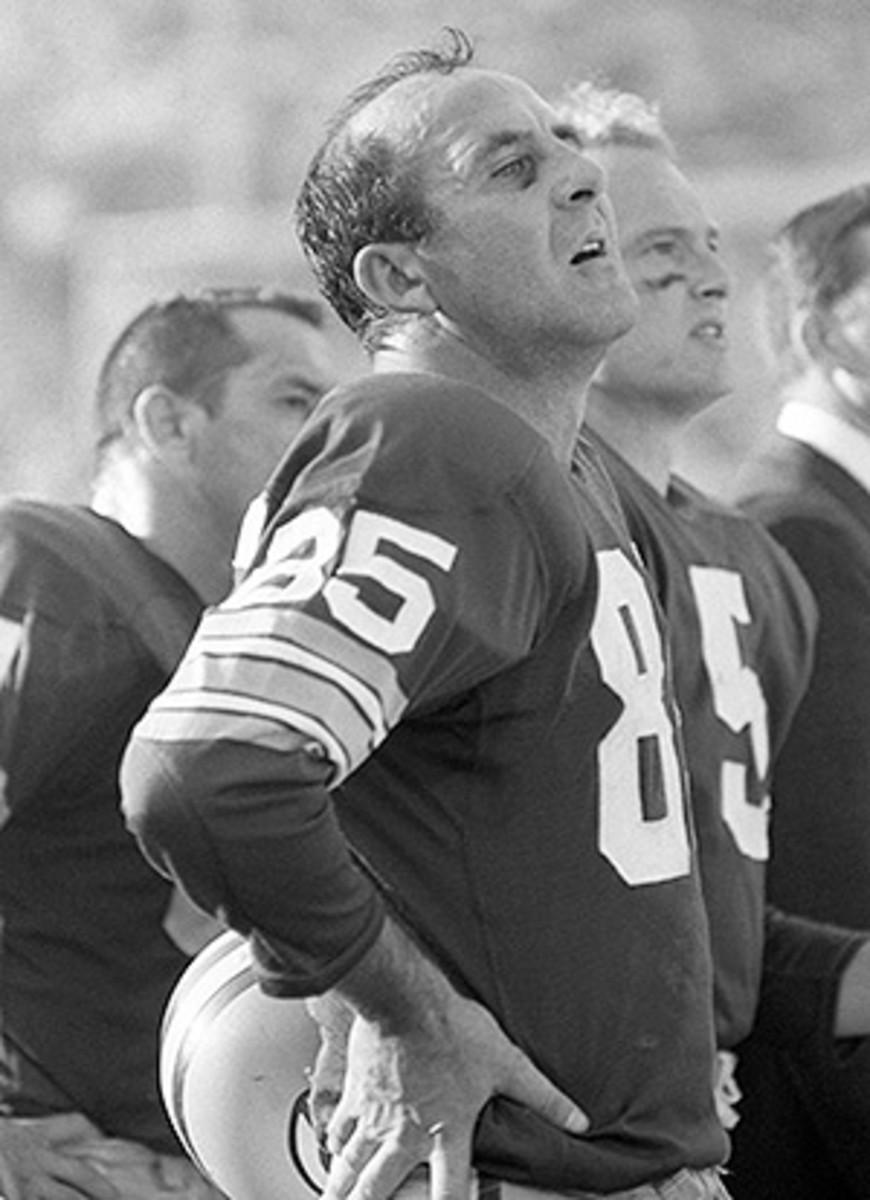
After McGee sold out of Chi-Chi’s in the mid-1980s (the chain eventually grew to more than 250 locations before it was gutted by an E.Coli incident in 2003, long after McGee and McDermott had cashed out), he became an investor in several Native American casinos in Wisconsin. Kramer once visited with several former Packers. “I asked him how that deal was going with the casinos,” says Kramer, “And he says we’re having trouble. I said, ‘What kind of trouble?’ Max says, ‘Trouble finding a big enough truck to haul the money.’ ”
He did all this by his wits and instincts and with scant business training or real involvement. “My father was not a traditional businessman,” says Mona Olson. “He never had a full-time job, he never worked more than a few hours a day. He was the face of those businesses. But he was very, very lucky in his decisions.”
McDermott, his longtime restaurant partner, says, “Max was the consummate partner. He had great ideas. I had a business background and I operated the business on a day-to-day basis. But Max did a lot of the thinking. After we were out of the business, we chatted on the phone almost every week. He was a good friend. I miss him greatly.”
From 1979 to '98, McGee also worked as the analyst with play-by-play man Jim Irwin on Packers radio broadcasts. He would make the trip from his home in Minneapolis to Green Bay. He brought a folksy charm to his work that generally endeared him to listeners. During a broadcast in Oct. 1996, when Irwin noted that a Buccaneers’ trainer had cut the tip off one of wide receiver Alvin Harper’s fingers while treating Harper for a hand injury, McGee said, "Good thing it wasn’t a groin injury." That same style also occasionally got him in trouble. During a 1990 broadcast, McGee described Vikings’ running back Herschel Walker like so: "You know Walker looks like he has on so much pads when he carries the ball, he really can't put the ball ... it looks like he`s just stole a watermelon headin' south.’’ McGee apologized for the potentially racist nature of the comment and said that as a kid in Texas, he had often stolen watermelons and run away with them.
***
Through the early years of McGee’s business success and broadcasting work, he remained single and estranged from his first family. That began to change in 1981, when at age 49, he met 27-year-old divorcee Denise Dawson one night at Maximillian’s. Dawson had been married from age 20 to 25 in her hometown of River Falls, Wis., where she owned a clothing store, and had recently moved to the Twin Cities. McGee asked her on a date and she accepted. After dinner and dancing at a rival nightspot, they came back to Maximillian’s after closing and waltzed on the empty disco floor. For a second date, McGee took Denise to the Kentucky Derby in the Chi-Chi’s private jet and sat in Hornung’s box. They dated for a year and a half, lived together for a year and a half, and then were married in the spring of '84. McGee was 51 and his bride was 29. "The thing about Max," says Denise, "is that he seemed much younger than his age. He was energetic and he was fun. And he had the quickest wit of anybody I’ve even known."
The first child of Max McGee’s second family was born on Sept. 1986, a boy they named Max and would call Maxie. He has Down Syndrome. A second boy, named Dallas (not for the football team, but for a character in a Jackie Collins novel that Denise can’t recall by title) was born in the spring of 1989. They became Max’s life. "He loved those little boys," says Denise. "He cuddled with them when they were little, he watched sports on television, he sat in the Jacuzzi and splashed in the bubbles." Maxie endured 11 surgeries by age 11, but later became a student manager for the powerhouse Minnetonka High football team and was so popular and respected that, as a senior, he was elected Homecoming King. "The gym erupted in cheers from students and staff," says Denise. "Dad Max had tears that night. It was an emotional time for him. Hopes and dreams and all that." Max and Maxie were particularly close. "They were a pair," says Dallas. "Those two, joined at the hip. My dad was Maxie’s life, and vice versa." Max was not handy around a house—"He couldn’t fix a leaky faucet," says Mona—but the one job he enjoyed was blowing the autumn leaves, because Maxie loved to watch him working the blower and sending leaves flying into the air. Max would do the yardwork in his Tommy Bahama shirt, silk shorts and Italian leather loafers, sockless. The neighbors found this hilarious, but Maxie loved it.
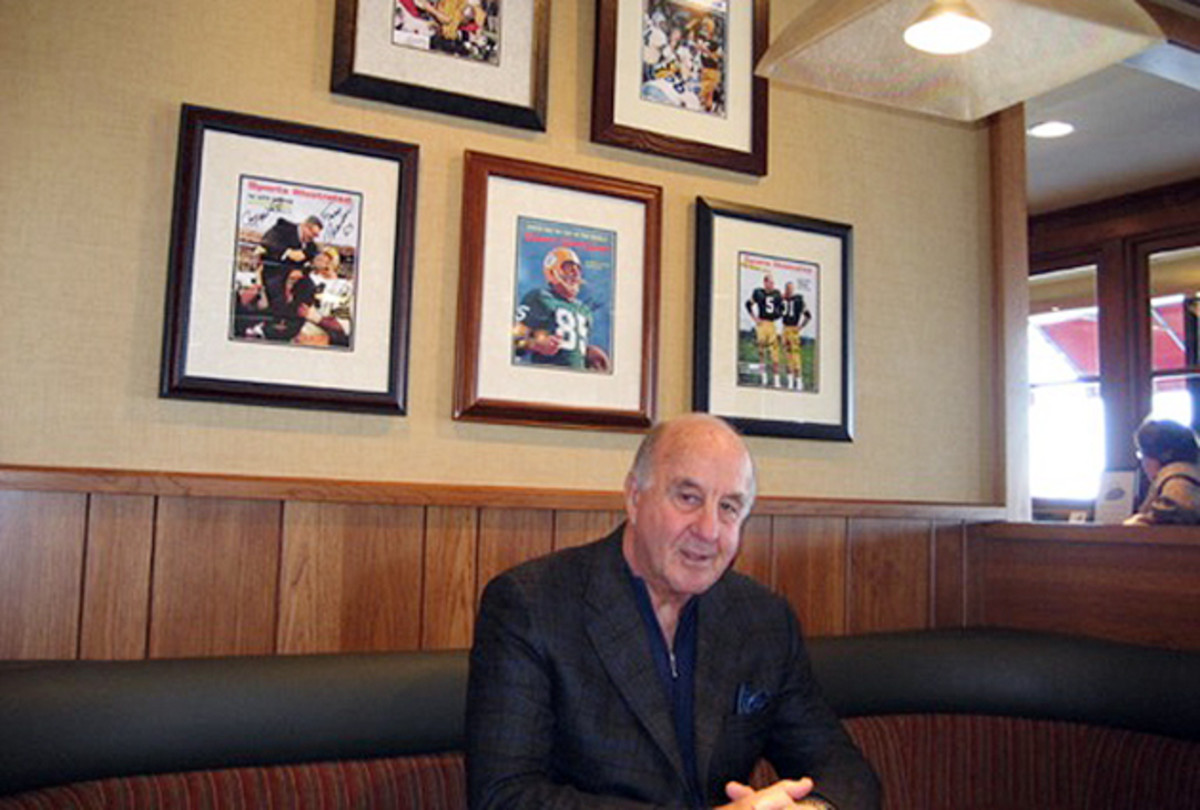
Dallas was a football player as a young boy, but switched later to snowboarding, and Max would drive him to the mountain and watch. "Once he told me he never drank a drop of alcohol in his life," says Dallas. "I can laugh about that now. If he had lived a little longer, maybe he would have told me those other stories." In truth, Max seldom told football stories without prodding. He especially did not talk about Super Bowl I unless asked. “Not once did I ever hear Max start a conversation about that Super Bowl,” says McDermott, his old business partner. Once, after a few fans came to Max and Denise’s table during dinner and asked about the legend of Los Angeles, Max told his wife, “I've told that story so many times, I’m starting to wonder how much of it is true.” (Of course he knew it was, but it was behind him.)
Early in life, Dallas was diagnosed with Type I Diabetes, the McGee family disease that Max had so hoped his children would dodge. Max was heartbroken, but acted by gifting $1 million to start the Max McGee National Research Center for Juvenile Diabetes in 1999 at the Children’s Hospital of Wisconsin, and later raised millions more through an annual golf tournament and other fundraisers. Frequently Max would speak at fundraisers for the center and would tell the audience, "I always thought the first Super Bowl was the most significant event in my life, but it wasn’t. The most significant moment in my life was when my son was diagnosed with diabetes." He could never get the word out—diabetes—without choking up.
His two families came together. Mona worked with her father for the diabetes center and they talked about raising children. "We never had a traditional father-daughter relationship," says Mona, "but it became very special." (Marcia died in 2014.) His boys grew up with their father nearby. They went out on Lake Minnetonka in Max’s boat and on family vacations to the mountains and the ocean. Dallas remembers sitting on Max’s lap as he worked during Packers’ games. "He was all about family," says Dallas. "I don’t think he was there for his daughters, the first time, the way he was there for us. I think he learned from that."
***
In 1994, there was another restaurant. Through the settlement of a defaulted loan, McGee and Denise became owners of the popular, Original Pancake House location in Edina, Minn., a suburb of Minneapolis. That restaurant became Max’s touchstone. Every morning he would go there and meet several friends for breakfast, and together they would work on the day’s crossword puzzle. Later he would play gin rummy at his country club—he was ruthless at that, too—before returning home in the afternoon. That was his routine. In the late '90s, family members began noticing that McGee was becoming forgetful. They took to tracking his movements every day and in 2002, he was diagnosed with an early form of Alzheimer’s. For the next five years, that daily routine sustained him.
On the morning of Sunday, Oct. 20, 2007, he took Maxie to the Original Pancake House for breakfast and then brought him back home and dug out the leaf blower. After the yard was finished, Max climbed up on the roof over the garage. It wasn’t very high; you could tough the gutter from the driveway without a ladder. But it had rained the night before and the cedar shingles were still wet and Max was wearing those Italian loafers. Denise arrived to find Max lying in the driveway, unconscious and bleeding from his head, Maxie standing over him. The doctors assured her that Max had died instantly from blunt trauma to his skull, but still, a month later, as she drove Maxie back to the house one afternoon, Maxie said, "I should have saved him." But Maxie endured; he lives with another young adult with Down’s in a house with two caregivers. Dallas is one of three owners of a production company in Chicago. Denise acquired two more Original Pancake Houses and then, last year, sold all three. They are all good.
Long before his death, McGee had set aside $50,000 for the services to follow his passing. "Max hated going to funerals," says Denise. "He told me to throw a party." So there was a "celebration of life" at a non-denominational church in Eden Prairie, Minn. And afterward, a catered party for guests. Close enough to a party. Everybody talked about one night out, a very long time ago, a couple of the damndest catches you’ll ever see, and then, so much more.
